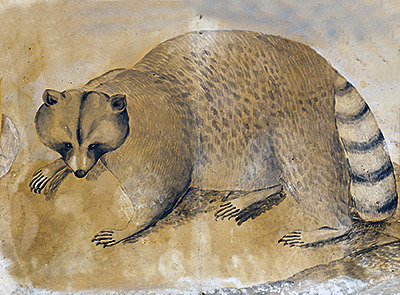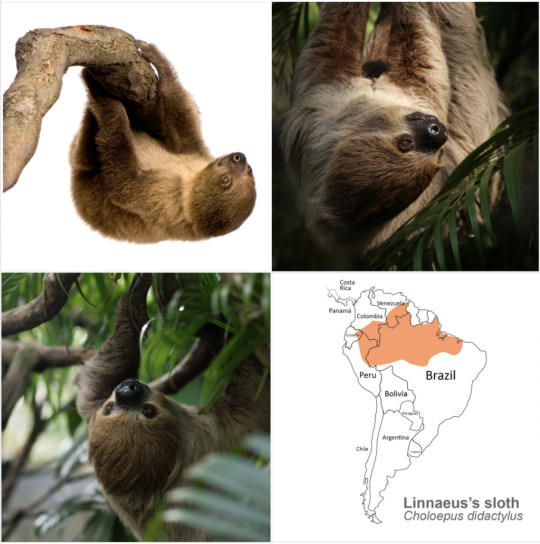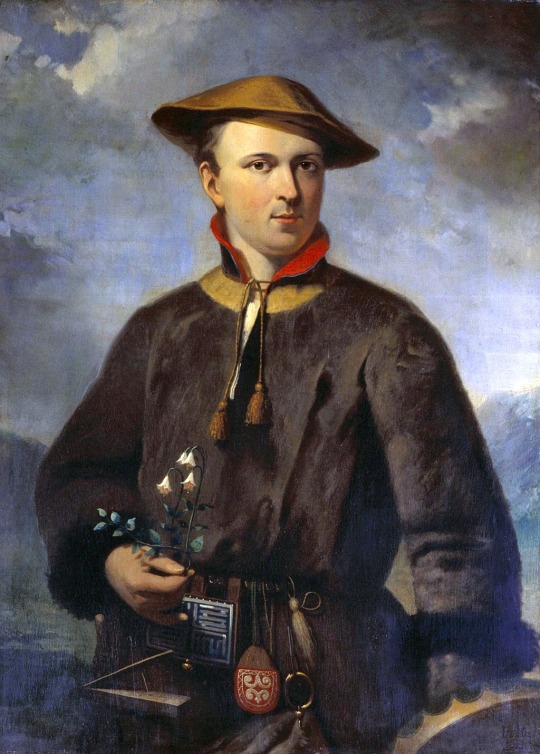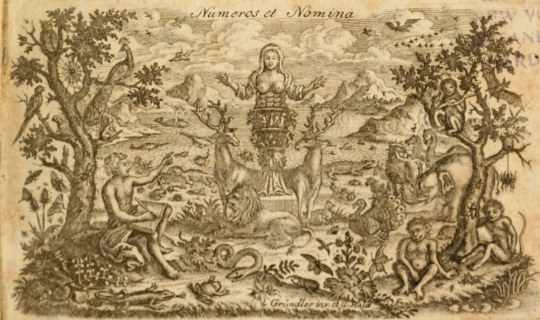#Carl Linnaeus
Text
hello tumblr I’m a frog scientist and I heard you like frogs here so I’m here to share frog content if that’s okay
my first contribution is to inform you all that Carl Linnaeus hated frogs. Like, really hated them:
"These foul and loathsome animals are abhorrent because of their cold body, pale color, cartilaginous skeleton, filthy skin, fierce aspect, calculating eye, offensive smell, harsh voice, squalid habitation, and terrible venom; and so their Creator has not exerted his powers to make more of them." - Carl Linnaeus, Systema Naturae 1758 (Translated from Latin)
idk what went down between Linnaeus and a frog but dude was traumatised
also here is a photo of one of my science frogs, his name is Granny

#i love frogs#frog science#frog#frogs#carl linnaeus#herptile#herpetology#science#history#green tree frogs#dumpy frog#whites tree frog
180 notes
·
View notes
Text
It’s pretty funny that Carl Linnaeus offered up the scientific name “Monoculus polyphemus” (meaning one-eyed cyclops) for a horseshoe crab species because he thought they had one eye, only for them to actually end up having like ten. I mean even just looking at them it’s pretty obvious they have at least two. I feel like that one was kind of an embarrassing swing and a miss for Carl.
#limulus polyphemus#I had to read through so much tedious 1700’s literature to figure out why tf they’re named after a cyclops#biology#Carl Linnaeus#history#horseshoe crabs#funny#animals#nature#zoology
648 notes
·
View notes
Text
Carl Linnaeus was the first to describe a naturally occurring mutant of toadflax (Linaria vulgaris) that converted the bilaterally symmetrical flower to a radially symmetrical form (Figure 20.31).

"Plant Physiology and Development" int'l 6e - Taiz, L., Zeiger, E., Møller, I.M., Murphy, A.
#book quotes#plant physiology and development#nonfiction#textbook#peloria#mutants#mutation#toadflax#linaria vulgaris#carl linnaeus#bilateral symmetry#radial symmetry#cycloidea#dna#methylation
26 notes
·
View notes
Text
TIL that Carolus Linnaeus was referred to as "the Second Adam," because he created a universal naming schema for animals (mirroring Adam's actions in Genesis 2:19-20).
18 notes
·
View notes
Text

For #RaccoonAppreciationDay here is a watercolor of Carl Linnaeus' pet raccoon, Sjupp, by Lars Alstring, c.1746-7. Sjupp was a gift from Crown Prince Fredrik and lived in Linnaeus' garden at Uppsala. This work hung in Linnaeus' study at Hammarby.
Read more about Sjupp here:
Here too is a short video from the Linnean Society about Sjupp:
youtube
#Carl Linnaeus#Linnaeus#Linnean Society#raccoon#Sjupp#pets in art#animals in art#animal holiday#Raccoon Appreciation Day#International Raccoon Appreciation Day#Swedish art#European art#18th century art#natural history art#zoological illustration#Lars Alstring#Youtube
11 notes
·
View notes
Text
losing my mind about the Wikipedia page on humans

Not only did they have to specify that Carl Linnaeus was a human, but that he was THE human
5 notes
·
View notes
Text
#linnaeus and dillenius sittin in a tree#tears and kisses#plant dad#gaaay#gay#bi#queer#carl linnaeus#johann jacob dillenius#bontanist#oxfod#plants#queer history#lgbqti#lgbt#botany#1760#1760s#vid
2 notes
·
View notes
Text

Continuing with #TwoFingeredSloth week, today we'll introduce you the chocolate sloth: Linnaeus's sloth!
Linnaeus’s two-fingered sloth is of similar appearance to C. hoffmanni, but has much darker coloration on the snout, hands, and feet.
Choloepus didactylus, literally “lame-foot” and “two-fingered”, is the scientific name of the Linnaeus two-fingered sloth, named after the very same Carl Linnaeus; the prominent figure of natural biology and father of taxonomy.
This species ranges from Venezuela, the Guyanas, and Colombia to Ecuador, Peru, and Brazil north of the Amazon River. There is some evidence to suggest that they also extend into Bolivia.
Do you want to learn more about sloths? Visit our website!
Source: The Sloth Conservation Foundation Facebook Page
#SlothFacts#Cute
#cute animals#animals#sloth#sloths#choloepus#two toed sloth#carl linnaeus#south america#wildlife#nature#animal facts#zoology#natural history#conservation
8 notes
·
View notes
Text
Ep. 38 Blackgirl on Mars
Martha Cinader speaks with Lesley-Ann Brown in Denmark, about her memoir, Blackgirl on Mars, a physical and spiritual search to discover home. The free-flowing conversation covers the mind of Carl Linnaeus, the waters of modern life and up-to-the-minute d
Lesley-Ann Brown roams Earth as Home.
Airing on WPVM Radio 103.7fm in Asheville NC, and WPVMfm.org at 4pm, PST December 6.
Martha Cinader speaks from the garden with Lesley-Ann Brown in Denmark, about her memoir, Blackgirl on Mars, a physical and spiritual search to discover home. The free-flowing conversation covers the organizing of Carl Linnaeus, the waters of modern life and…

View On WordPress
#Banned Books#Blackgirl on Mars#Carl Linnaeus#colonialism#Lesley-Ann Brown#Memoir#Poetry#racism#Repeater Books#spoken word#trauma#Wordslanger#Wordwind Chorus#writer#writing#Yvette Murray
2 notes
·
View notes
Text

The bedroom of 18th century botanist, Carl Linnaeus, who covered the walls of both his bedroom and study with botanical drawings.
Image source
10 notes
·
View notes
Photo

Carl Linnaeus was born on May 23, 1707. A Swedish botanist, zoologist, taxonomist, and physician who formalized binomial nomenclature, the modern system of naming organisms. He is known as the "father of modern taxonomy". In botany and zoology, the abbreviation L. is used to indicate Linnaeus as the authority for a species' name. In older publications, the abbreviation "Linn." is found. Linnaeus's remains constitute the type specimen for the species Homo sapiens following the International Code of Zoological Nomenclature, since the sole specimen that he is known to have examined was himself.
#carl linnaeus#botany#zoology#taxonomy#nomenclature#binomial nomenclature#international code of zoological nomenclature#science#science history#science birthdays#on this day#on this day in science history
3 notes
·
View notes
Photo


Pulmonaria officinalis, Spotted Lungwort or Common Lungwort a lovely little lad named after our Lungs. Most of Europe is blessed with reaching from Coast to Russia Central. Sadly Norway missed the day they were being handed out, The British Isles too missed it but took action and harboured it until naturalized. The Rest of the World Took notice and decided “Hey thats a nice plant I want one too” and so they got one or two.
The Lungworts are little hidey boys and prefer to be under larger vessels with shades. But if those untethered solar winds hit the little babino before its ready it will be Vegetative (wow) and wait till its shady to grow. They grace the land with their colours during early spring, which they appear red-pink at first but will alter their own pH levels to make themselves blue-purple.
Leonhart Fuchs (he sure did, 1501-1566) haply named the genus for he was a German Physician and 1/3 Founding Botanists, while Carl Linnaeus only got to give the epithet (second name part). And at the time anything remotely shaped like an organ was surely but the Big Man’s work was to cure an ailment relative to that shape. And by the Silly Man of Land Luck trait they got an actual plant they has healing attributes that does help with Lung ailments also burns. This is a common Action that Occurs throughout time, what chance.
Note: Please Do Not Ingest Random Plants you have No Knowledge About or Using them Medically.
4 notes
·
View notes
Text
speaking of linnaeus, he named his favourite flower after himself, giving it the name linnea borealis

as a result, linnéa has become a common name for girls in sweden, and i know several people with it (including one of my sisters)

and here’s a painting of linnaeus holding the linnea-flower, which he later used for his emblem once he was ennobled (at which point his name became carl von linné rather than carl linnaeus, and that is the name he is known by in sweden, while internationally he is still referred to as linnaeus)
#historical problematic fave#autistic icon#fun fact in my helward uni fic VH compares john to linnaeus and that is specifically my way of implying that john is autistic#carl linnaeus#carl von linne#sweden
5 notes
·
View notes
Text
In the eighteenth century, Linnaeus, the ever-colorful Swedish taxonomist, paid the breast a dubious honor by naming an entire class after it: Mammalia, literally “of the breast,” a term of Linnaeus’s invention.
As Londa Schiebinger has described, Linnaeus could have chosen from other features that mammals were known at the time to have in common. We could have been classified as Pilosa, the hairy ones, or as Aurecaviga, the hollow-eared ones (a reference to the distinctive three-boned structure of the mammalian middle ear), or as bearers of a four-chambered heart (term uncoined and perhaps uncoinable).
[...]
Zoologists accepted that humans were a type of animal, as uncomfortable as the notion was and remains. A taxon was needed that would link humans to other species. Whatever feature Linnaeus chose to highlight as the bond between us and them inevitably would become the synecdoche of our beastliness. All mammals are hairy, but men are hairier than women, so Pilosa wouldn’t do. The structure of the ear is too dull to merit immortalization through nomenclature. The breast, however, has romance and resonance, and best of all, it is most highly articulated in women.
In the same volume in which Linnaeus introduced the term Mammalia, he also gave us our species name, Homo sapiens, man of wisdom, the category distinguishing humans from all other species.
#book : woman intimate geography#carl linnaeus#18th century#londa schiebinger#linguistics#animal#biology
0 notes
Text
Hellebore!
Hellebore is native to Eurasia!
Its name comes from the Ancient Greek word “helléboros” (deriving from “heleîn”, meaning ‘to injure’, and ‘borá’ meaning ‘food’!), which comes from how the flower is poisonous. They’re also known as Christmas or Lenten roses, because of the time in which they flower (January-May)! They’re not related to roses though – they belong to the buttercup family!
Carl Linnaeus was the one to establish the Hellebore genus, in Species Planetarium in 1753 (I mentioned him before, I call him Flower Kronos cause made the flower clock!).
According to Greek mythology, these flowers originated from the tears of Demeter at the loss of her daughter, Persephone. They symbolise rebirth and second chances, generally that after some period of darkness or difficulty, you’ll be rewarded handsomely.
It also represents the idea that change is inevitable, and allowing it to happen instead of fearing it will also be rewarding.
While it has a reputation as a poisonous plant, it was traditionally used for medicinal purposes! According to Greek myth, the healer Melampus is said to have cured madness by treating patients with hellebore, and herbalists from ancient times through to the Middle Ages used it to treat a few illnesses, headaches, etc! Since they’re known to be poisonous, it’s probably best to consult an expert (NOT ME!!!) before ingesting it.
They bloom near the end of winter, but before spring! They’re also woodland-edge plants, doing best in rich, moisture-retentive (keeps moisture in) soil, and can do well in either full or partial shade! They don’t do so well in wet or boggy conditions, however. Bumblebees LOVE them cause the flowers face downward (to protect it from winter rains, also to shelter the little guys!), as well as how they’re rich in nectar!
Because they bloom just before spring, it was thought to have magickal powers, and because of this had strong association with witchcraft. It’s associated with the goddess Hecate, and in spells can be used for protection or to communicate with the dead. In Medieval times, it was often planted at the entrance of homes to ward off evil.
You can pair them with Begonia to warn of future challenges, Edelweiss for courage in the face of an upcoming emotional challenge, and Clover to wish the recipient good fortune.
0 notes
Text

cover image of the Systema naturae of Carl Linnaeus, 1760. (x)
Did Linnaeus consider himself to be a second Adam? Certainly, he imagined himself, like Adam, to have been divinely inspired. He thus alluded to 1 Kings 17:8 —'and the word of the LORD came to him'— when giving an account of his authorship of binomial nomenclature. Perhaps most telling of all, the frontispiece of the 11th edition of Systema naturae (1760) shows him in Paradise surrounded by animals and plants of all kinds. At his feet is his own flower, Linnea borealis, while in the centre of the piece is depicted Diana polymammae, who represents the fecundity of nature. The iconography is unmistakeably that of Adam in Eden.
[...]
[But] Linnaeus's supporters also realised that this system was artificial, and only approached the perfection of Adamic taxonomy. The Scottish physician and naturalist Alexander Garden (1730-91), who gave his name to the beautifully scented gardenia flower, consoled Linnaeus for not having come up with a natural system of classification, observing: 'The man who gives the natural system must be a second Adam, seeing intuitively the differences of things.'
In all this, the significance of the episode of Adam's naming of the creatures was that a natural nomenclature was in principle possible. While Linnaeus did not insist that his nomenclature was identical with the perfect system once delineated by Adam, he did seem to cherish the notion that it was a reasonable approximation. The difficulty with framing a complete system was the discovery of a new species, and this practical difficulty —one presumably not faced by Adam— precluded the construction of a perfect, natural system. As we have seen, this difficulty had long been recognised, following the failure of the natural classificatory systems of the seventeenth century.
- Peter Harrison ("Linnaeus as a Second Adam? Taxonomy and the Religious Vocation")
#Christianity#Garden of Eden#Adam and Eve#Carl Linnaeus#taxonomy#Lutheranism#symbolism#Artemis#nature
1 note
·
View note